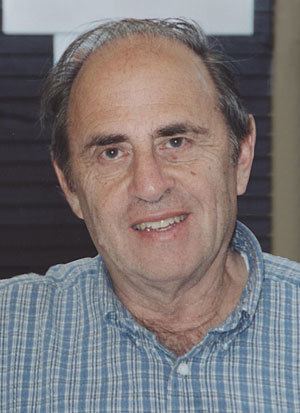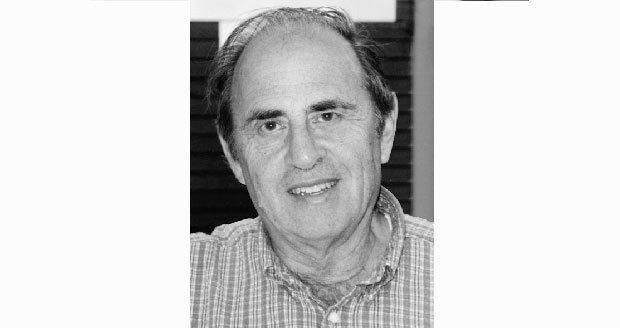Role Mathematician Influenced Alain Badiou | Name Paul Cohen | |
 | ||
Born April 2, 1934Long Branch, New Jersey ( 1934-04-02 ) Known for Cohen forcingContinuum hypothesis Influences Georg Cantor, Kurt Godel Similar People Kurt Godel, Georg Cantor, John Charles Fields, Peter Sarnak, Antoni Zygmund | ||
Paul cohen part 1 of 6 g del centennial vienna
Paul Joseph Cohen (April 2, 1934 – March 23, 2007) was an American mathematician. He is best known for his proofs that the continuum hypothesis and the axiom of choice are independent from Zermelo–Fraenkel set theory, for which he was awarded a Fields Medal.
Contents
- Paul cohen part 1 of 6 g del centennial vienna
- Paul cohen part 2 of 6 g del centennial vienna
- Early years
- Contributions to mathematics
- On the continuum hypothesis
- Selected publications
- References

Paul cohen part 2 of 6 g del centennial vienna
Early years
Cohen was born in Long Branch, New Jersey, into a Jewish family that had immigrated to the United States from what is now Poland; he grew up in Brooklyn. He graduated in 1950, at age 16, from Stuyvesant High School in New York City.
Cohen next studied at the Brooklyn College from 1950 to 1953, but he left without earning his bachelor's degree when he learned that he could start his graduate studies at the University of Chicago with just two years of college. At Chicago, Cohen completed his master's degree in mathematics in 1954 and his Doctor of Philosophy degree in 1958, under supervision of the Professor of Mathematics, Antoni Zygmund. The title of his doctoral thesis was Topics in the Theory of Uniqueness of Trigonometrical Series.
In 1957, before the award of his doctorate, Cohen was appointed as an Instructor in Mathematics at the University of Rochester for a year. He then spent the academic year 1958–59 at the Massachusetts Institute of Technology before spending 1959–61 as a fellow at the Institute for Advanced Study at Princeton. These were years in which Cohen made a number of significant mathematical breakthroughs. In Factorization in group algebras (1959) he showed that any integrable function on a locally compact group is the convolution of two such functions, solving a problem posed by Walter Rudin. In On a conjecture of Littlewood and idempotent measures (1960) Cohen made a significant breakthrough in solving the Littlewood Conjecture.
On June 2, 1995 Cohen received an honorary doctorate from the Faculty of Science and Technology at Uppsala University, Sweden
Contributions to mathematics
Cohen is noted for developing a mathematical technique called forcing, which he used to prove that neither the continuum hypothesis (CH), nor the axiom of choice, can be proved from the standard Zermelo–Fraenkel axioms (ZF) of set theory. In conjunction with the earlier work of Gödel, this showed that both of these statements are logically independent of the ZF axioms: these statements can be neither proved nor disproved from these axioms. In this sense, the continuum hypothesis is undecidable, and it is the most widely known example of a natural statement that is independent from the standard ZF axioms of set theory.
For his result on the continuum hypothesis, Cohen won the Fields Medal in mathematics in 1966, and also the National Medal of Science in 1967. The Fields Medal that Cohen won continues to be the only Fields Medal to be awarded for a work in mathematical logic, as of 2014.
Apart from his work in set theory, Cohen also made many valuable contributions to analysis. He was awarded the Bôcher Memorial Prize in mathematical analysis in 1964 for his paper "On a conjecture by Littlewood and idempotent measures", and lends his name to the Cohen–Hewitt factorization theorem.
Cohen was a full professor of mathematics at Stanford University, where he supervised Peter Sarnak's graduate research, among those of other students. Cohen was an Invited Speaker at the ICM in 1962 in Stockholm and in 1966 in Moscow.
Angus MacIntyre of the University of London stated about Cohen: "He was dauntingly clever, and one would have had to be naive or exceptionally altruistic to put one's 'hardest problem' to the Paul I knew in the '60s." He went on to compare Cohen to Kurt Gödel, saying: "Nothing more dramatic than their work has happened in the history of the subject." Gödel himself wrote a letter to Cohen in 1963, a draft of which stated, "Let me repeat that it is really a delight to read your proof of the ind[ependence] of the cont[inuum] hyp[othesis]. I think that in all essential respects you have given the best possible proof & this does not happen frequently. Reading your proof had a similarly pleasant effect on me as seeing a really good play."
On the continuum hypothesis
While studying the continuum hypothesis, Cohen is quoted as saying in 1985 that he had "had the feeling that people thought the problem was hopeless, since there was no new way of constructing models of set theory. Indeed, they thought you had to be slightly crazy even to think about the problem."
"A point of view which the author [Cohen] feels may eventually come to be accepted is that CH is obviously false. The main reason one accepts the axiom of infinity is probably that we feel it absurd to think that the process of adding only one set at a time can exhaust the entire universe. Similarly with the higher axioms of infinity. Now
Thus
An "enduring and powerful product" of Cohen's work on the continuum hypothesis, and one that has been used by "countless mathematicians" is known as "forcing", and it is used to construct mathematical models to test a given hypothesis for truth or falsehood.
Shortly before his death, Cohen gave a lecture describing his solution to the problem of the continuum hypothesis at the Gödel centennial conference, in Vienna in 2006. A video of this lecture is now available online.
